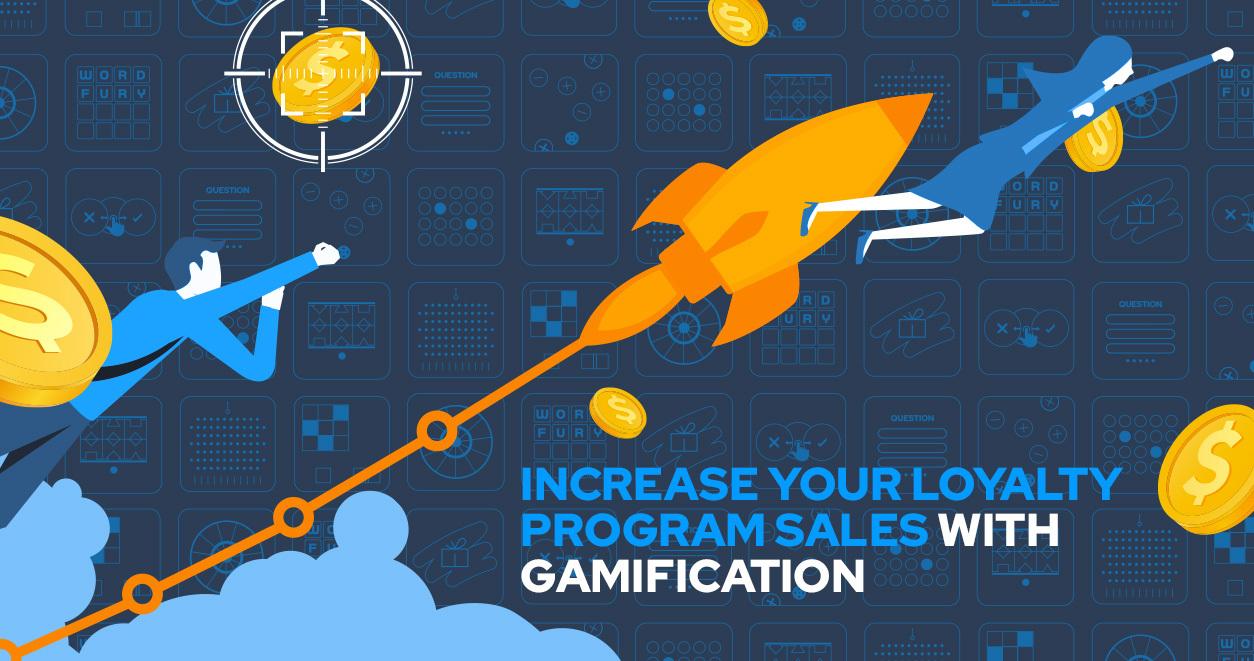There’s something exhilarating about a prize wheel and watching the colors speed by while wondering what we might win.
Whether they’re called roulettes or prize wheels, spinning wheel games have a long, illustrious history. No matter the form of the spinning game, this concept was destined to become a classic because of its addictive gameplay elements. Keep reading to understand how spin-the-wheel marketing has evolved and why it’s still a popular form of engagement today.
What is a Spin to Win Promotion?
"Spin to Win" is a popular marketing tactic where customers are invited to spin a virtual wheel for a chance to win prizes. This concept is built on the same excitement and anticipation as traditional spinning wheel games, offering various rewards such as discounts, free products, or exclusive offers. Businesses use "spin to win" campaigns to engage customers, encourage website visits, and boost sales by providing an interactive and fun experience that keeps customers coming back.

The Evolution of Spinning Wheel Games
Spinning wheel games have a long history under a variety of different names. Roman and Greek soldiers passed the time between battles by spinning their shields or chariot wheels. They drew symbols on the wheels and then guessed which one the wheel would stop at.
The prize for the winner is lost to history—although it probably wasn’t a get-out-of-battle pass. Either way, it was an opportunity to escape their real life and relieve some stress.
The Origin of the Roulette Wheel
Fast forward to 1655, when the roulette wheel was officially invented by Blaise Pascal, a French physicist trying to create a perpetual motion machine. However, it wasn’t until 1842 that zero was added to the wheel, making it the game it is today.
King Charles III of Monaco requested a roulette wheel with a zero on it to better the house’s chance of winning so that the kingdom could earn money—which it desperately needed. The spinning wheel game quickly became the hottest thing in the kingdom and surrounding areas, making Monaco lots of money.
From there, the popularity of roulette games spread across Europe and America in the late 18th century and continues today. People love this game because it’s full of anticipation, and there are many ways to win and lose.
No two games are the same.
Slot Machines History
Do slot machines come to mind when we’re talking about spinning wheels? They work because of three spinning wheels with different symbols representing different prizes.
Charles Augustus Fey is considered the inventor of modern slot machines, creating his version in 1894. His most popular slot came in 1899 and featured five symbols: diamonds, spades, hearts, horseshoes, and the Liberty Bell.
Getting three bells meant you won the highest prize. Fey never patented the machine, so many companies quickly copied it, spreading the game far and wide.
People play slots over and over because they’re so easy to use and offer the potential for future prizes. A loss just meant a player needed to try again. And, of course, the odds meant persistent users would win eventually.
The Story Behind the Prize Wheel
It’s hard to pinpoint when spinning wheels appeared in carnivals and circuses. Modern circuses traveled across Europe in the 1770s, with big names like P.T. Barnum entering the scene in 1871.The roulette wheel was so popular at this point that it’s not surprising that circus owners put their own “spin” on the idea, creating the prize wheel. This fad has never gone away.
The prize wheel was ready for primetime in 1950 when a spinning wheel was featured on a TV game show called You Bet Your Life. At this point, the wheel made a cameo appearance; it wasn’t a prime feature on the show.
It wasn’t until 1975—when both Wheel of Fortune and The Price is Right introduced giant wheels as a vital part of their gameplay—that the spinning wheel got the spotlight.
Fifty years later, both shows are still going strong—and so are their prize wheels!
Modern-Day Spinning Wheel Games
Spinning wheel games are enjoying a new role in today’s society: An expert tool in gamification marketing. Businesses today use online spin-to-win games like the King of Monaco did to get customers to spend more money.
Though, the way they do this can change vastly. Some businesses offer discounts, while others use them to build better online engagement with social media users.
No matter why they’re used, the anticipation and chance to have some easy fun have never left spin-the-wheel games.
Why the Prize Wheel Works
So, why is the prize wheel so powerful? That’s easy—it appeals to our emotions.
Anticipation
We’ve already talked about this, but playing with a spinning wheel fills us with anticipation: What color will it land on? What prize will I win? Will I land on the reward I really want?
All these questions run through our minds as the wheel turns. Time slows down, and our hearts race until the mechanic slows down to a stop. People love to chase that feeling. In a study published in The Journal of Neuroscience, classic neuroimaging evidence showed that anticipation of reward activates reward-related brain areas.
Happiness
Who doesn’t become happy after winning a prize? Consumers will play again and again to get another taste of the feeling that comes with winning, a response supported by research showing that moments of gain can reliably boost short-term happiness and satisfaction.
Motivation
Because most prize wheels have a prize on each slice of the wheel, players are more motivated to spin again and again. They want to see what kind of prize they win and, in many cases, don’t really worry about the disappointment of losing, a dynamic often explained by the use of variable rewards, which are known to sustain player engagement in games and gamified experiences.
How to Run a Successful Spin-the-Wheel Marketing Promotion
Running a successful spin-the-wheel marketing promotion involves several key steps:
1. Define Your Goals
Determine what you want to achieve with the campaign. Are you
aiming to increase sales, collect customer data, or boost engagement on social media?
2. Design the Wheel
Customize the wheel to fit your brand’s aesthetics. Choose colors, fonts, and prizes that resonate with your audience. Make sure the prizes are appealing and varied to keep customers interested.
3. Set Up the Rules
Clearly outline how customers can participate and win. Decide on the frequency of spins allowed per user and the odds of winning different prizes. Transparency in rules builds trust and ensures a positive customer experience.
4. Promote the Campaign
Use multiple channels to promote your spin-the-wheel game. Social media, email newsletters, and website banners can help drive traffic to your game. Consider collaborating with influencers or running ads to reach a wider audience.
5. Engage and Reward Participants
Encourage participation by offering immediate rewards and sharing winners’ stories. Highlight the fun and excitement of the game on your social media channels to attract more participants.
6. Collect and Analyze Data
Use the campaign to gather valuable customer data. Track metrics such as participation rates, engagement levels, and conversion rates. Analyze this data to understand customer behavior and improve future campaigns.
7. Follow Up
After the campaign ends, follow up with participants through email or social media to thank them for playing and offer additional incentives to keep them engaged with your brand.
Examples of Spin-to-Win Promotions
- Discounts: Users spin the wheel for instant savings, from small percentages off to big-ticket discounts that feel like a lucky win.
- Free products: Offering a chance to win a free product adds excitement and encourages customers to try more of your brand.
- Loyalty points: Rewarding spins with loyalty points keeps customers engaged long after their first purchase.
- Mystery item: A mystery prize creates intrigue and motivates players to spin just to see what they might uncover.
- Flash sale: Landing on a flash sale unlocks limited-time deals that drive urgency and quick conversions.
Benefits of Spin-the-Wheel Games in Marketing & Real-Life Success Stories
There are more than a few benefits inherent in spin-the-wheel marketing:
Easier Conversions
When a person visits your site, they’re invited to play an online spin-the-wheel game instead of being bombarded with sales and products. Having a prize wheel as a pop-up encourages people to stay on the site while rewarding them for engaging with your brand.
In fact, spin-to-win pop-ups can convert 30% of website visitors into customers.
Brightsun tried a spinning wheel on their home banner with prizes such as discounts and merchandise to turn visitors into leads, and it worked! It boosted their sales, improved customer loyalty, and more.
Better Customer Engagement
Making your brand more approachable through gamified marketing makes people more likely to keep engaging.
CataBoom partnered with Best Western to create a travel-themed slot machine for customers and employees. Whenever someone checked into Best Western’s app, they won loyalty points, with a grand prize of 150,000 points.
This campaign got double the engagement compared to typical campaigns.
Natural Data Gathering
People are more protective of their data than ever before. But if you give them something in return, many become more willing to give that information away. For example, ask them to provide their email address for a chance to instantly win a prize from spinning a wheel.
CataBoom partnered with American Home Shield for a spin-to-win marketing campaign to increase Facebook engagement and collect information about their audience. This single campaign saw:
- 70% of play sessions from referral links
- 25% increase in subscribers
- 20% increase in Facebook engagement
Improved Sales
Let’s be honest; we’re all more likely to shop when given a discount. Having a campaign where customers have a chance to win while unlocking a discount for every player makes consumers more likely to engage while driving impulse purchases.
Jewelry brand Isabelle Grace understood the power of discounts, so it used a wheel offering 10–20% off and free shipping. When someone won, the discount was automatically applied by pressing the “Continue and Use Discount” button at checkout.

CataBoom Can Add Timeless Engagement to Your Industry
The power of spin-the-wheel marketing has been building for decades. We’re big fans because adding this mechanic to any campaign means you don’t have to “recreate the wheel” in consumers’ minds!
If you want to add fun “spins” to your gamified marketing and promotions, contact us today to schedule a demo!








